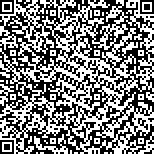|
| 引用本文: | 辜 睿, 蒲 磊, 李军亚, 赵 平, 雷泞菲.番茄对不同养分水平下南美蟛蜞菊和蟛蜞菊化感作用的响应[J].广西植物,2021,41(8):1354-1362.[点击复制] |
| GU Rui, PU Lei, LI Junya, ZHAO Ping, LEI Ningfei.Allelopathic effects of Sphagneticola trilobata and S. calendulacea on Lycopersicon esculentum under different nutrient availabilities[J].Guihaia,2021,41(8):1354-1362.[点击复制] |
|
| |
|
|
| 本文已被:浏览 5829次 下载 1989次 |

码上扫一扫! |
|
|
| 番茄对不同养分水平下南美蟛蜞菊和蟛蜞菊化感作用的响应 |
|
辜 睿1, 蒲 磊1, 李军亚2, 赵 平3, 雷泞菲1*
|
|
1. 成都理工大学 生态环境学院, 成都 610059;2. 四川省地质矿产勘查开发局四○五地质队,
四川 都江堰 611830;3. 贵州省地质矿产勘查开发局一○五地质大队, 贵阳550018
|
|
| 摘要: |
| 外来入侵植物分泌的化感物质能够影响本地植物的生长生理特性,养分水平对入侵植物的化感潜力有重要影响。该文通过将番茄植株分别与同种番茄、南美蟛蜞菊、蟛蜞菊植株相邻原位种植,以15%、25%、50%、75%的Hoagland培养液模拟不同养分水平开展温室控制实验,探究在不同养分水平下入侵植物南美蟛蜞菊及其亲缘植物蟛蜞菊的化感作用对本地植物番茄叶绿素荧光参数及生物量的影响。结果表明:(1)番茄在75%养分水平下的叶绿素荧光参数和生物量显著优于其余3个养分水平。(2)随着养分水平降低,番茄叶片的PS Ⅱ最大光化学效率(Fv/Fm)、PS Ⅱ实际光合量子产量 [Y(Ⅱ)]、光化学淬灭系数(qp)及植株的总生物量显著减少,非光化学淬灭系数(NPQ)和植株根系生物量的分配比例增加。(3)在25% Hoagland培养液处理下,与南美蟛蜞菊混植番茄的Fv/Fm、Y(Ⅱ)、qp和总生物量显著低于与蟛蜞菊混植番茄,NPQ和根系生物量的分配比例显著高于与蟛蜞菊混植番茄。综上结果说明南美蟛蜞菊和蟛蜞菊可能通过根系分泌化感物质抑制番茄的生长发育,且南美蟛蜞菊的化感作用强于蟛蜞菊,而增加栽培基质中的养分水平可以显著降低南美蟛蜞菊和蟛蜞菊对番茄的化感胁迫作用。 |
| 关键词: 化感作用, 养分水平, 叶绿素荧光参数, 总生物量, 生物量分配 |
| DOI:10.11931/guihaia.gxzw201912045 |
| 分类号:Q945 |
| 文章编号:1000-3142(2021)08-1354-09 |
| 基金项目:四川省科技计划项目(2019YFN0148); 贵州省科技计划项目([2019]1424); 四川省十三五育种攻关项目(2016NYZ0021)[Supported by Science and Technology Program of Sichuan Province(2019YFN0148); Science and Technology Program of Guizhou Province([2019]1424); Thirteenth Five-Year Breeding Program of Sichuan Province(2016NYZ0021)]。 |
|
| Allelopathic effects of Sphagneticola trilobata and S. calendulacea on Lycopersicon esculentum under different nutrient availabilities |
|
GU Rui1, PU Lei1, LI Junya2, ZHAO Ping3, LEI Ningfei1*
|
|
1. Institute of Ecological Environment, Chengdu University of Technology, Chengdu 610059, China;2. 405 Geological Brigade of
Sichuan Bureau of Geology &3.Mineral Resources, Dujiangyan 611830, Sichuan, China;4.3. 105 Geological Brigade of
Guizhou Bureau of Geology &5.Mineral Resources, Guiyang 550018, China
1. Institute of Ecological Environment, Chengdu University of Technology, Chengdu 610059, China; 2. 405 Geological Brigade of
Sichuan Bureau of Geology & Mineral Resources, Dujiangyan 611830, Sichuan, China; 3. 105 Geological Brigade of
Guizhou Bureau of Geology & Mineral Resources, Guiyang 550018, China
|
| Abstract: |
| Allelochemicals secreted by invasive alien plants can affect the growth and physiological characteristics of native plants, and nutrient availabilities have an important influence on the allelopathic potential of invasive plants. The Lycopersicon esculentum planted in situ was adjacent to the same species of L. esculentum, Sphagneticola trilobata and S. calendulacea, and 15%, 25%, 50% and 75% Hoagland solution were simulated different nutrient availabilities in greenhouse control experiments, in order to investigate the allelopathic effects of the invasive plant S. trilobata and its native congener S. calendulacea on leaf chlorophyll fluorescence parameters and biomass of the native plant Lycopersicon esculentum under different nutrient availabilities. The results were as follows:(1)The chlorophyll fluorescence parameters and biomass of L. esculentum at 75% Hoagland solution were significantly higher than those of the other three nutrient availabilities.(2)As the nutrient availabilities decreased, PS Ⅱ maximum photochemical efficiency(Fv/Fm), effective PS Ⅱ quantum yield [Y(Ⅱ)], photochemical quenching coefficient(qp)of L. esculentum leaves and the total biomass of L. esculentum plants were remarkably reduced, while non-photochemical quenching coefficient(NPQ)and the biomass allocation to roots were increased.(3)Under 25% Hoagland solution, Fv/Fm, Y(Ⅱ), qp and total biomass of L. esculentum planted with Sphagneticola trilobata were remarkably lower than those of Lycopersicon esculentum planted with Sphagneticola calendulacea, NPQ and the biomass allocation to roots were remarkably higher than those of Lycopersicon esculentum planted with Sphagneticola calendulacea. The above results demonstrate that S. trilobata and S. calendulacea may inhibit the growth of Lycopersicon esculentum through the secretion of allelochemicals in roots, and the allelopathic effects of Sphagneticola trilobata is stronger than S. calendulacea. Therefore, increasing nutrient availabilities in cultivation substrate can dramatically reduce the allelopathic effects of S. trilobata and S. calendulacea on Lycopersicon esculentum. |
| Key words: allelopathic effects, nutrient availability, chlorophyll fluorescence parameters, total biomass, biomass allocation |
|
|
|
|
|